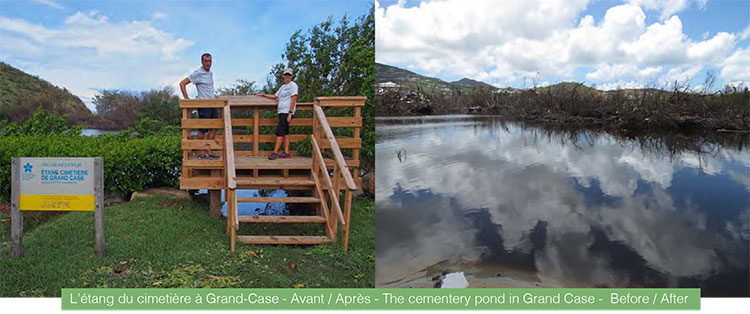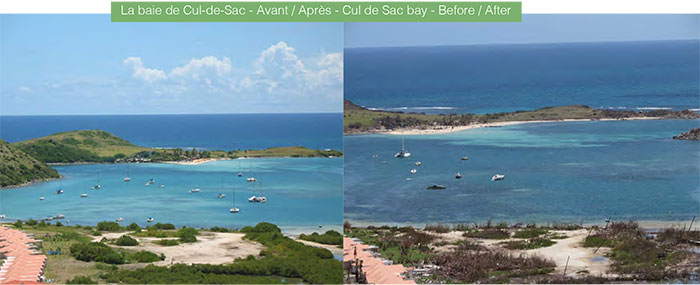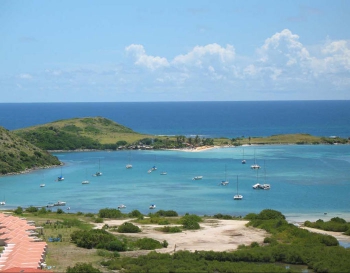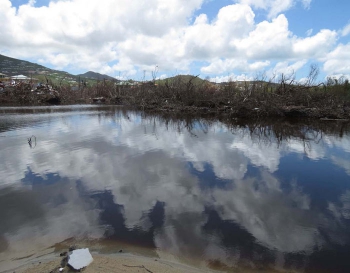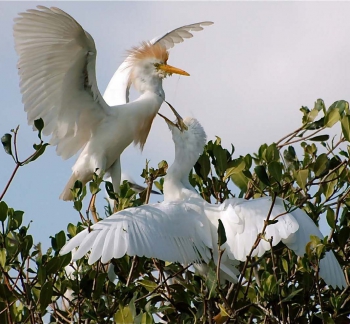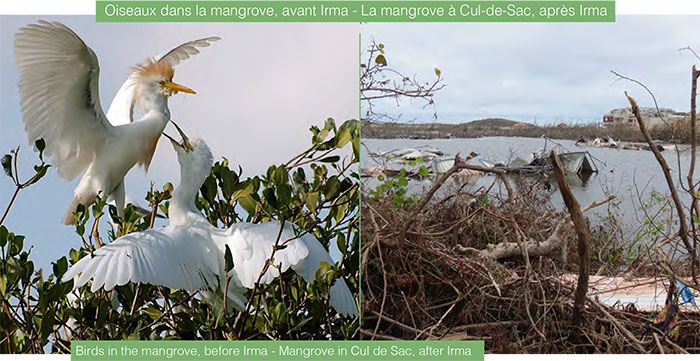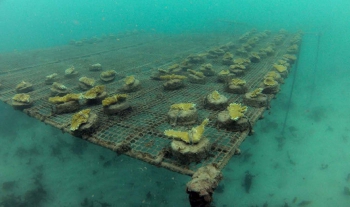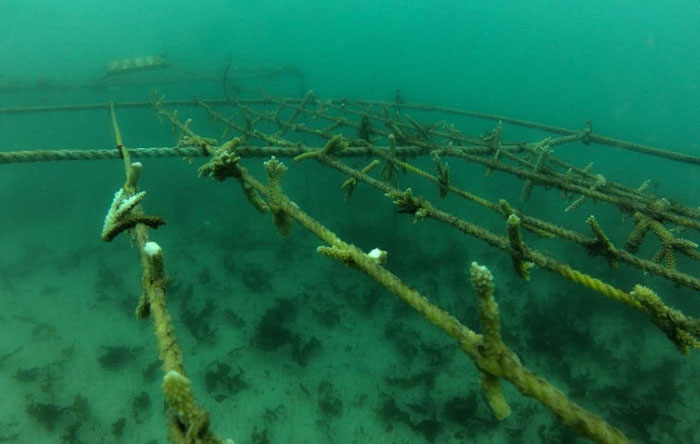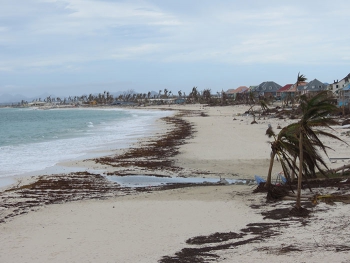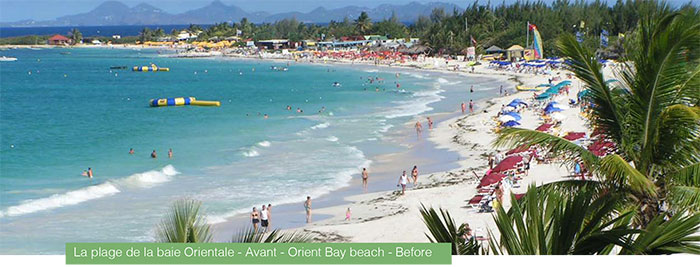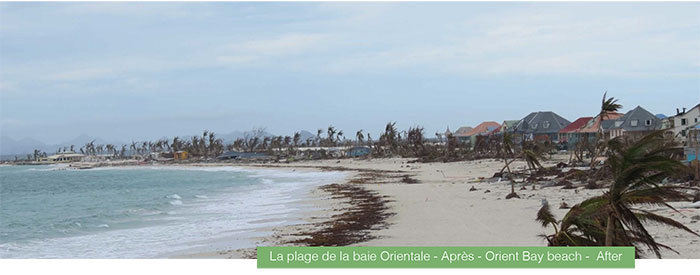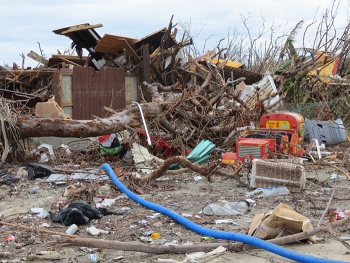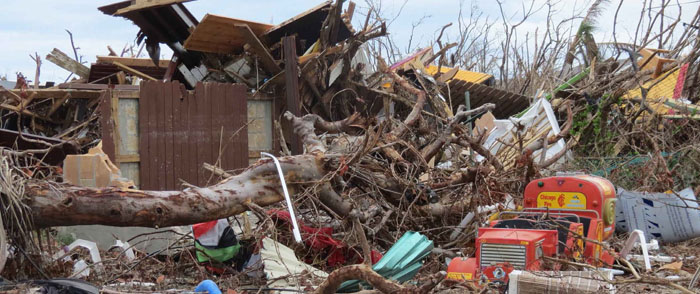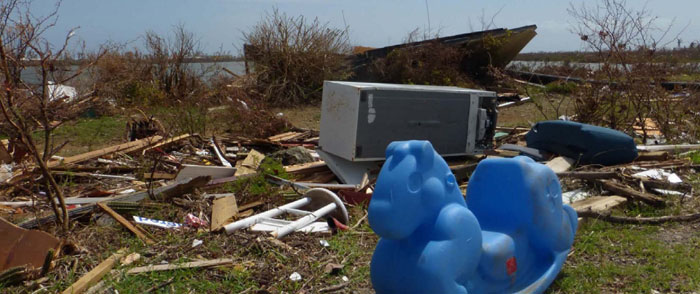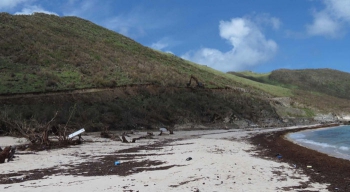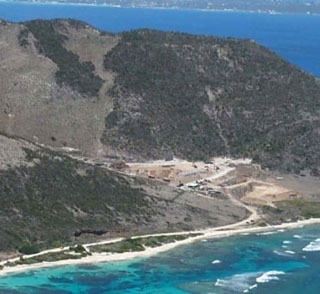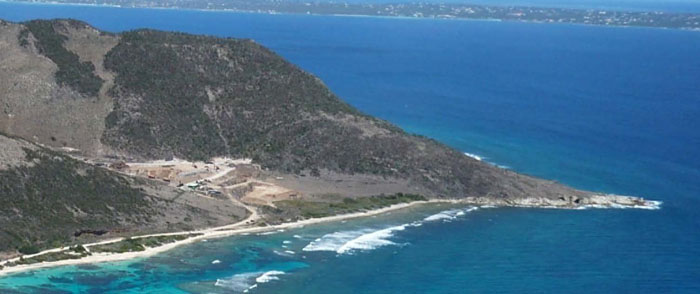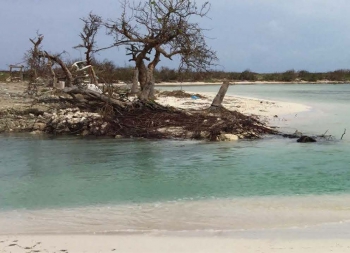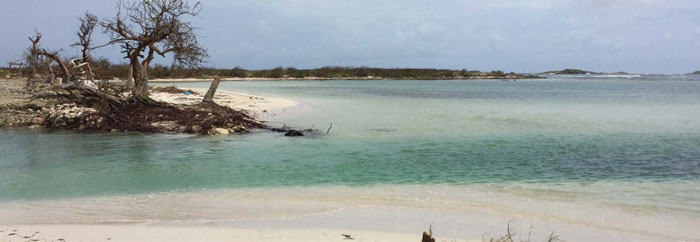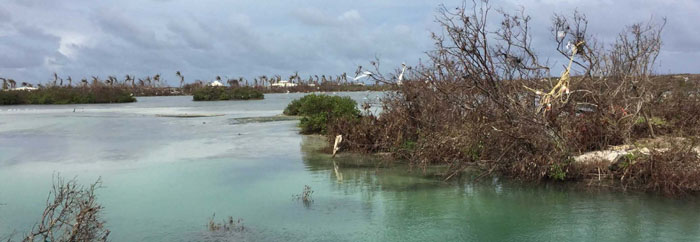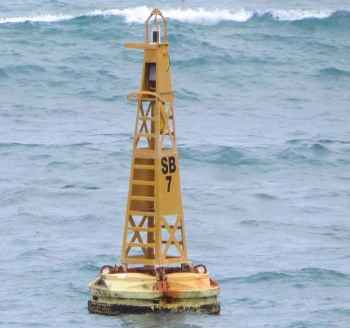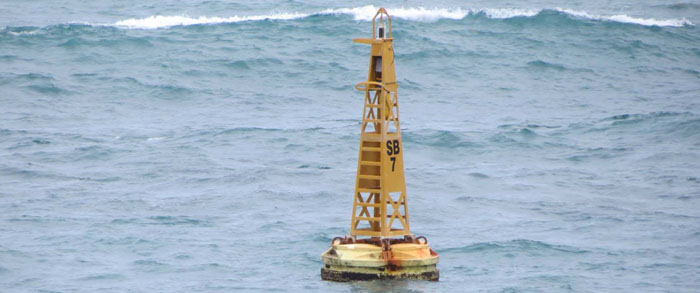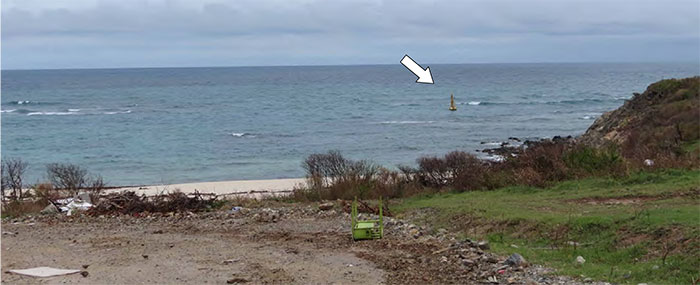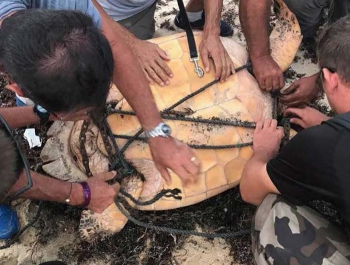Where the mangroves are still present and in good health, this essential vegetation played its role as the second line of defense against the storm surge from the hurricane, after the coral reefs, which were often already in bad shape.
In mitigating the energy of the sea, this littoral forest along the back of the beaches suffered enormously. The trees are broken, leafless, buried and burned by the sand carried by the waves, and covered with debris left by the water as it retreated or carried on the wind.
The good news is that these dynamic areas are used to stress — caused by the wind, the waves, or by man — and the mangroves will recover in time, given proper care and promotion of its reconstitution.
The first task consists in evacuating debris of all sizes.
This colossal job will take a long time, as a large amount of debris of all kinds must be removed.
One positive thing is that the mangrove seeds can float and will repopulate the damaged areas.
Adapted to difficult and unstable situations, the mangrove has luckily developed mechanisms for resistance, such as reinforced roots, the capacity to live in salt water, and the scattering of floating seeds with water currents.
